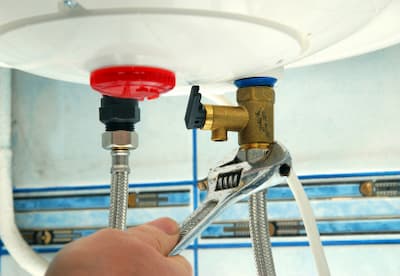7 Signs Your Water Heater Is Affected By Sediment Buildup

Sediment buildup in your water heater can be a very common issue among Melbourne homeowners, and oftentimes, it can be an issue that's very frequently overlooked. Over time, minerals such as calcium and magnesium can accumulate in your water heater, leading to various complications. Identifying these signs early can help you prevent costly repairs or the need to replace your water heater, and in that regard, our skilled Melbourne plumbers are here to help. Below are some key indicators that your water heater may be experiencing sediment buildup.
1. Strange Noises
One of the earliest signs of sediment buildup is unusual sounds coming from your water heater. If you hear popping, rumbling, or banging noises, it’s likely due to sediment particles heating up and causing mini-explosions within the tank. These noises occur when water becomes trapped under the sediment layer and then bubbles up as it heats. If left unchecked, these sounds can indicate more serious issues on the horizon.
2. Reduced Heating Efficiency
Have you noticed that your water isn’t as hot as it used to be? Sediment acts as an insulating layer between the heating element and the water, making it harder for your heater to do its job. This means your water heater has to work harder and longer to heat the same amount of water, leading to higher energy bills and less efficient performance.
3. Fluctuating Water Temperatures
Inconsistent water temperatures are another sign of sediment buildup. You might find that your shower is suddenly too hot or too cold without any adjustment on your part. This happens because sediment layers can create hot spots within the tank, causing uneven heating and unpredictable water temperatures.
4. Longer Heating Times
If it seems like your water heater is taking longer than usual to provide hot water, sediment might be to blame. The buildup at the bottom of the tank can reduce the space available for water, meaning there’s less hot water available and it takes longer to heat the entire tank. This inefficiency not only wastes your time but also increases wear and tear on the heater.
5. Decreased Hot Water Supply
Another telltale sign of sediment buildup is a noticeable drop in the amount of hot water your heater can supply. You might find that you run out of hot water faster than before, especially during times of high usage. Sediment reduces the capacity of your water heater, leaving you with less hot water for showers, laundry, and dishes.
6. Discolored Water
If your hot water appears rusty, muddy, or has a metallic odor, it could be a sign of sediment buildup. Sediment can cause corrosion within the tank, leading to rust that contaminates your water supply. This not only affects the taste and appearance of your water but can also pose health risks.
7. Increased Energy Bills
Keep an eye on your energy bills. If you notice a significant increase without a corresponding rise in usage, sediment buildup in your water heater might be the culprit. As sediment accumulates, your heater has to work harder and longer, consuming more energy to maintain the same level of performance.

CONTACT YOUR MELBOURNE PLUMBING EXPERTS TODAY!